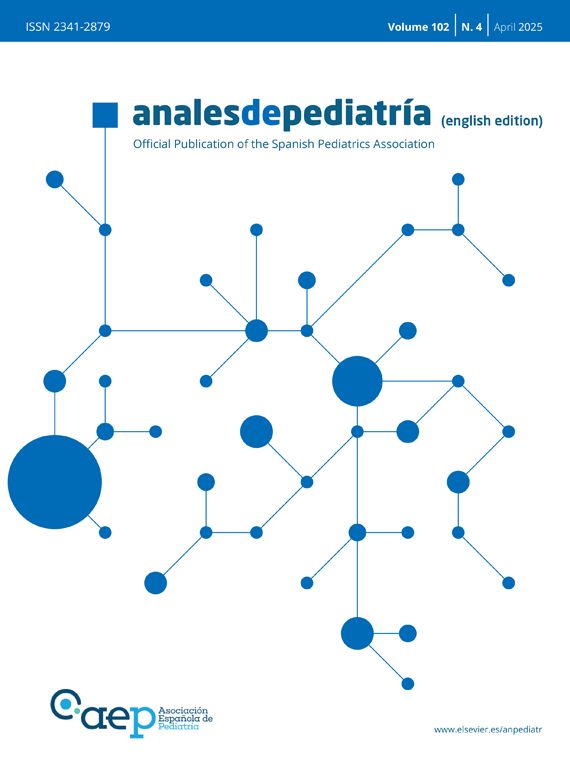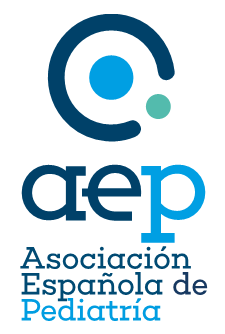Painful procedures, whether diagnostic or therapeutic, are frequent in pediatric care.1 The management of pain and anxiety should be prioritized during the performance of these procedures and considered an absolute requirement to guarantee quality of care in both inpatient and outpatient settings. Previous studies have identified the lack of staff, training or dedicated space as barriers to its implementation and several studies have reported the use of sedation and analgesia in a lower-than-expected proportion in pediatric procedures.2
At present, several therapeutic options are available for management of procedural pain in pediatric patients, one of which is the administration of nitrous oxide (N2O). Nitrous oxide is a gas naturally present in the atmosphere that, when inhaled in certain concentrations (from 15% to 70%) has sedative, anxiolytic and mildly analgesic effects. Its mechanism of action has yet to be fully elucidated, but it has been hypothesized that its effects are mediated by the modulation of opioid receptors. When inhaled through a mask or tracheal tube, it has a quick onset of action, and upon its cessation, it is cleared from the lungs almost immediately (in approximately 5 min), which makes it particularly useful in pediatric care at the outpatient level (for instance, in pediatric emergency departments) or for patients without vascular access. In addition, it is not metabolized in tissues, so its interaction with other drugs is practically nonexistent. Its effect is dose-dependent; mixed with oxygen at concentrations of 50% or higher, it can have a sedative and anxiolytic effect and decrease the level of consciousness while preserving independent breathing and protective airway reflexes.3
Due to its pharmacokinetic characteristics and scarce side effects, N2O is widely used for the management of the pain and anxiety associated with various short painful procedures in collaborative pediatric patients, such as fracture reduction, wound or burn care or dental procedures.
Nitrous oxide is also utilized in other sectors, such as the aerospace or food industries, in which it is used as a propellant gas in aerosols or as a food additive (E942), among other applications.4 Due to its dissociative effects, its illicit recreational use in nightlife, a context in which it is commonly referred to as “laughing gas”, has increased substantially.
However, the use of N2O and other volatile anesthetics contributes to the production of greenhouse gases and thus has a deleterious impact on environmental health. For this reason, its use is currently under debate, and some centers have launched different mitigating actions with the aim of reducing the resulting emissions or restrict its use.4
The pharmacokinetic characteristics of anesthetic gases in general, and N2O in particular, have fostered their widespread use.1 Some of the salient advantages of N2O are its rapid onset of action and near immediate end of its effects upon cessation,3,5 its simple and painless administration and its acceptability as a sedative among families of pediatric patients and the patients themselves.5
This gas is widely used for management of procedural pain in pediatric outpatients. Many studies support its safety, feasibility and ease of use.6
Few adverse effects, mild and predictable, are observed when N2O is used as authorized in the hospital setting, such as nausea and vomiting, dizziness, euphoria, and, more rarely, otalgia and paresthesia, which are more frequent when it is used in combination with other drugs. Due to its considerable diffusivity and low solubility, it can accumulate rapidly in gas-filled cavities, so its use is contraindicated in patients with known or suspected ectopic gas (pneumothorax) or increased pressure in rigid cavities (otitis media or head trauma).3 It should also not be used in patients who refuse the technique or have facial lesions that would hinder its delivery though a mask.
More severe adverse events have been described in the context of illicit recreational use, such as hypotension, hypoxia, blurry vision, impaired coordination or confusion, among others.
Emissions from anesthetic gases, broadly speaking, have a potential environmental impact.7 Nitrous oxide is the third most important greenhouse gas, followed by carbon dioxide (CO2), and its increased levels in the atmosphere are chiefly associated with the use of fertilizers and fossil fuels. It is estimated that anesthetic gases contribute 0.1% of total greenhouse gas emissions,4 and, while this may seem a negligible percentage, given that they contribute to the destruction of the ozone layer and have a negative impact on public health, the rational use of N2O paramount. Among the initiatives in Spain, we ought to highlight the Zero Emissions project launched by the Hospital Universitario de Cruces (Barakaldo) in 2021, which includes monitoring emissions with the aim of reducing or eliminating the use of agents like N2O and the use of gas purification systems. Similar projects are also being implemented in other countries. For instance, in the United Kingdom, the Nitrous Oxide Project recommends stewardship of medical N2O and periodic auditing to ensure that its use is clinically warranted.
At present, some authors propose foregoing its use if an alternative is available, be it local, regional or intravenous anesthesia. In pediatric care, effective systemic agents are available for sedation and analgesia during invasive procedures, although they may have adverse effects that are not inconsequential, such as respiratory depression, desaturation, apnea, delirium, nausea and vomiting.6
Concerned by emerging recommendations to avoid its use, the Committee on Pediatric Pain of the Asociación Española de Pediatría (AEP, Spanish Association of Pediatrics) reviewed the evidence on the indications, adverse effects and environmental impact of N2O and considered whether its use for management of pain and anxiety related to painful procedures should be discouraged. The current evidence supports recommending the rational use of N2O and the implementation of strategies to reduce its contribution to greenhouse gases resulting from its use for medical purposes, such as controlling the flow of inhaled gas, the use of nasal or oral masks allowing a tight seal or, at the level of the institution, measures to purify or eliminate anesthetic gases.
In pediatric care, N2O is a safe and widely used option for sedation and analgesia during outpatient procedures that cause mild to moderate pain as well as significant anxiety. Under these circumstances, alternative pharmacological approaches would require vascular access, a period of nil per os and, in some cases, the use of medications known to cause more adverse effects.
The Committee on Pediatric Pain of the AEP considers that the rational use of N2O in these clinical scenarios continues to be feasible and that, for the time being, discouraging its use on account of the potential environmental impact of the occasional and controlled use of the gas is not warranted, especially given that, when used as indicated, it contributes minimally to the greenhouse effect.
FundingThis research did not receive any external funding.




